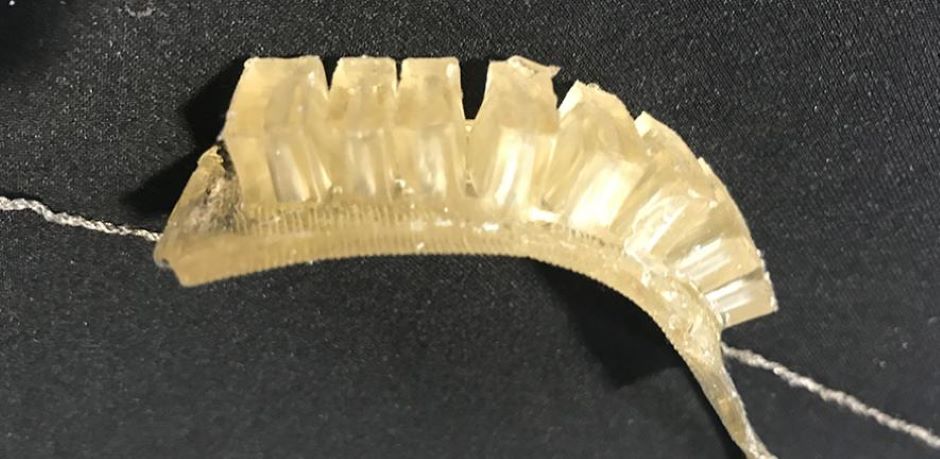Self-healing materials breakthrough for artificial hands and soft robotics
Researchers at Cambridge University have developed self-healing, biodegradable, 3D-printed materials that could be used to create realistic artificial hands and other soft robotics applications.

Described as low-cost and jelly-like, the materials can sense strain, temperature and humidity and they can also partially repair themselves at room temperature. The team’s results are reported in NPG Asia Materials.
Soft sensing technologies could transform robotics, tactile interfaces and wearable devices, among other applications. However, most soft sensing technologies are not durable and consume high amounts of energy.
“Incorporating soft sensors into robotics allows us to get a lot more information from them, like how strain on our muscles allows our brains to get information about the state of our bodies,” said first author David Hardman from Cambridge’s Department of Engineering.
Related news
As part of the EU-funded SHERO project, Hardman and his colleagues have been developing soft sensing, self-healing materials for robotic hands and arms. These materials can detect when they are damaged, take the necessary steps to temporarily heal themselves and then resume work without the need for human interaction.
Register now to continue reading
Thanks for visiting The Engineer. You’ve now reached your monthly limit of news stories. Register for free to unlock unlimited access to all of our news coverage, as well as premium content including opinion, in-depth features and special reports.
Benefits of registering
-
In-depth insights and coverage of key emerging trends
-
Unrestricted access to special reports throughout the year
-
Daily technology news delivered straight to your inbox










Water Sector Talent Exodus Could Cripple The Sector
Maybe if things are essential for the running of a country and we want to pay a fair price we should be running these utilities on a not for profit...